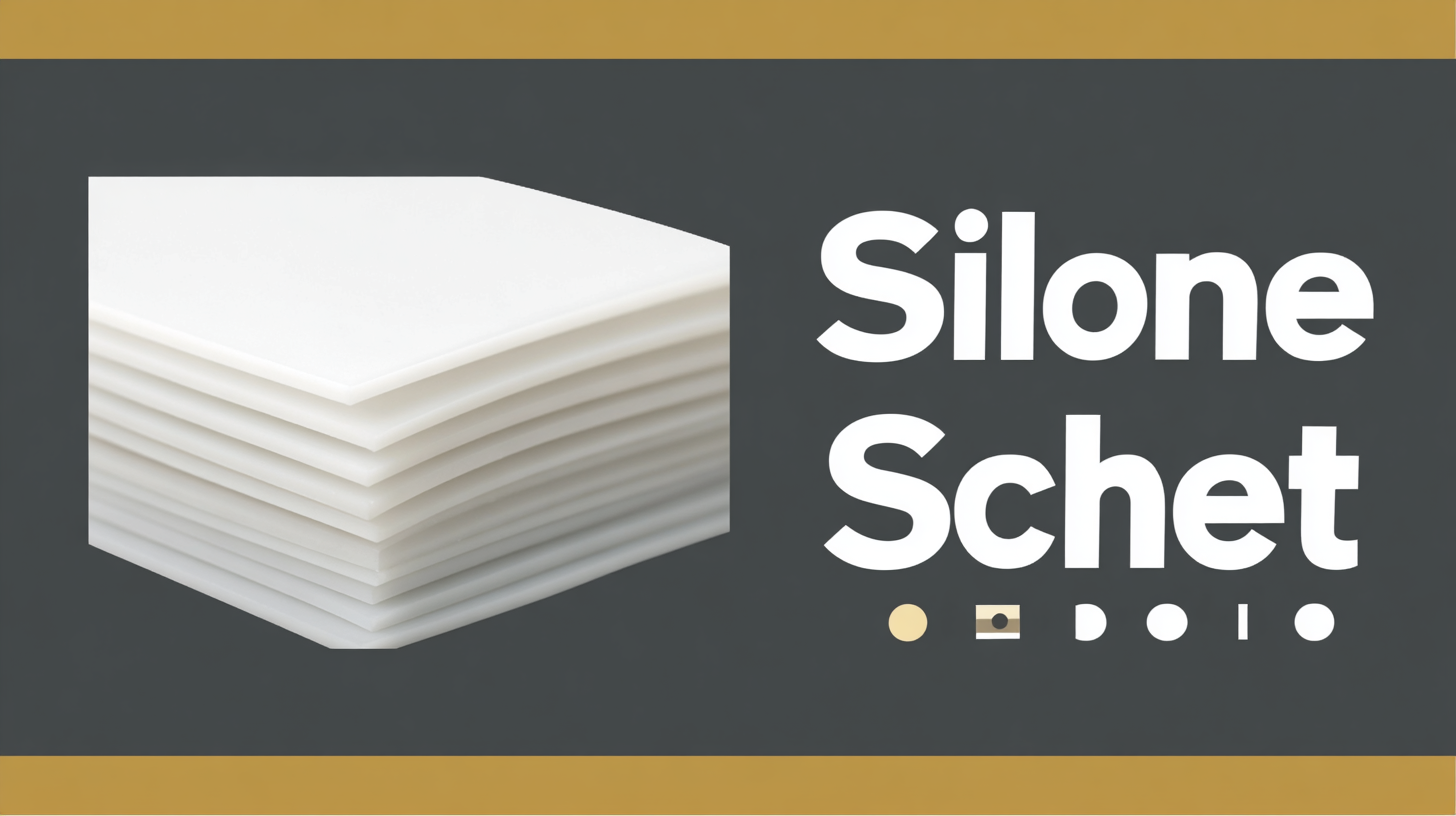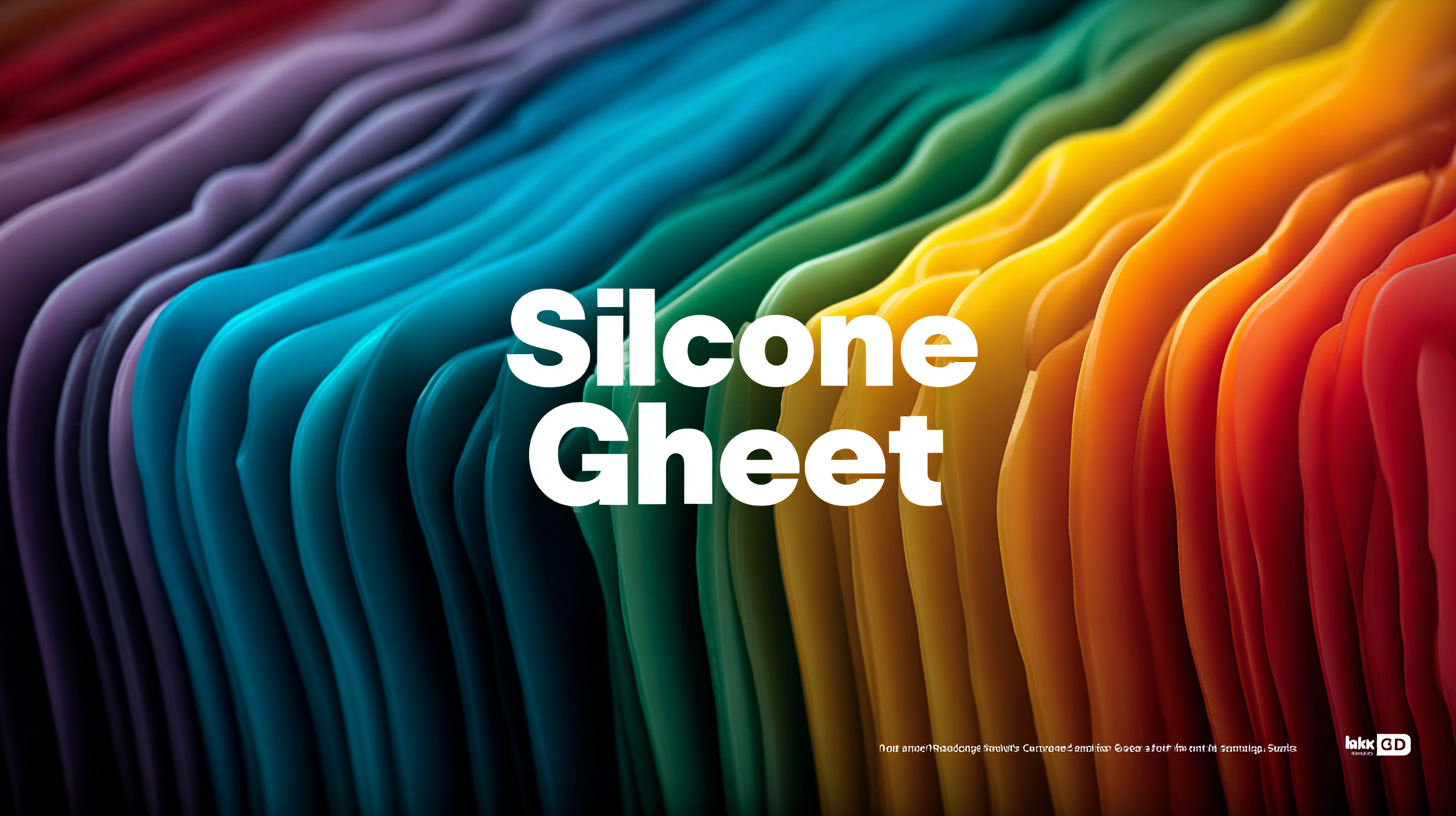


In recent years, the demand for high-quality Silicone Sheets has surged, driven by their versatile applications across industries such as healthcare, automotive, and construction. According to a report by MarketsandMarkets, the global silicone rubber market is projected to reach over $10 billion by 2026, highlighting the escalating importance of silicone technology in modern manufacturing. As businesses seek materials that are not only durable but also able to withstand extreme temperatures and harsh chemicals, Silicone Sheets have emerged as a top choice for engineers and manufacturers alike. This ultimate guide delves into the essential features, performance metrics, and industry standards of Silicone Sheets, providing a comprehensive comparison of the best options available on the market. Understanding these factors is crucial for selecting the right Silicone Sheet that meets both functional and regulatory requirements.

When evaluating silicone sheet alternatives, it’s crucial to consider the distinct material properties and benefits each type offers. According to a report by Market Research Future, the global silicone market was valued at approximately $10 billion in 2022 and is projected to grow at a CAGR of 4.5% from 2023 to 2030. This growth is largely driven by the superior performance characteristics of silicone sheets, which include high thermal stability, resistance to chemicals, and excellent flexibility. These attributes make silicone sheets a preferred choice in industries ranging from healthcare to automotive.
In contrast, alternatives such as polyurethane and PVC sheets exhibit varied performance levels. For instance, polyurethane sheets often offer better abrasion resistance, as highlighted in a study published in the Journal of Materials Science. However, they may not withstand extreme temperatures as effectively as silicone sheets. Furthermore, while PVC is commonly utilized for its cost-effectiveness, its susceptibility to environmental factors makes it less durable over time, which can be detrimental in applications requiring longevity. Therefore, aligning the specific requirements of your application with the distinct benefits of each material is essential for optimal performance and reliability.
| Property | Silicone Sheet A | Silicone Sheet B | Silicone Sheet C | Silicone Sheet D |
|---|---|---|---|---|
| Thickness (mm) | 2.0 | 1.5 | 3.0 | 2.5 |
| Tensile Strength (MPa) | 8.0 | 7.5 | 9.0 | 7.0 |
| Shore Hardness (Shore A) | 60 | 50 | 70 | 65 |
| Temperature Range (°C) | -60 to 200 | -40 to 180 | -50 to 230 | -60 to 210 |
| Color Options | Clear, Blue | Red, Black | Green | White, Gray |
| UV Resistance | Yes | Yes | No | Yes |
When evaluating silicone sheets, three key performance indicators must stand out: durability, flexibility, and temperature resistance. According to industry research from the Silicone Alliance, high-quality silicone sheets exhibit a tensile strength of up to 3,500 psi, which translates to robust durability that ensures fewer replacements and greater longevity in various applications. This strength is particularly critical in industries such as automotive and aerospace, where component reliability is paramount.
Flexibility is another essential feature of silicone sheets, with some varieties demonstrating elongation at break percentages exceeding 600%. This characteristic allows them to conform to intricate designs and movements without compromising integrity. A comparative study published in the Journal of Material Science showed that silicone sheets maintain their mechanical properties even under severe deformation, making them ideal for use in medical devices and equipment.
Temperature resistance is vital for applications involving exposure to extreme conditions. Silicone sheets can withstand a broad temperature range, from -100°F to 500°F, as indicated by a report from the High-Performance Polymers Consortium. This resilience to thermal extremes not only enhances performance but also expands their usability across various sectors, including food processing and electronics. Choosing silicone sheets with superior durability, flexibility, and thermal resistance ensures optimal performance tailored to specific industry needs.

 When selecting silicone sheets for various applications, understanding the industry standards such as FDA, NSF, and UL certifications is crucial. The Food and Drug Administration (FDA) certification ensures that silicone materials are safe for contact with food, making them ideal for kitchenware, countertop surfaces, and food processing environments. Products that meet FDA standards are subjected to rigorous testing, guaranteeing they do not leach harmful substances and maintain their integrity under various temperatures.
When selecting silicone sheets for various applications, understanding the industry standards such as FDA, NSF, and UL certifications is crucial. The Food and Drug Administration (FDA) certification ensures that silicone materials are safe for contact with food, making them ideal for kitchenware, countertop surfaces, and food processing environments. Products that meet FDA standards are subjected to rigorous testing, guaranteeing they do not leach harmful substances and maintain their integrity under various temperatures.
In addition to FDA certification, NSF certification focuses on public health and safety. NSF-certified silicone sheets can be used in food service and preparation areas, as they meet strict hygiene and safety guidelines. This certification is particularly valuable in commercial kitchens where the risk of contamination must be minimized. Moreover, Underwriters Laboratories (UL) certification provides assurance regarding the material’s safety in electrical applications. UL certification verifies that the silicone sheets can withstand certain environmental conditions and meet fire safety standards, making them suitable for use in products requiring electrical insulation. By understanding these industry standards, consumers can make informed choices and ensure that the silicone sheets they choose are both safe and effective for their intended use.
As the demand for more sustainable and innovative materials grows, the industry is witnessing a shift towards alternatives that can potentially replace traditional silicone sheets. These emerging options not only aim to match the functional performance of silicone but also address environmental concerns associated with its production and disposal. For example, bio-based polymers and thermoplastic elastomers are gaining traction due to their renewable sources and lower ecological footprints, providing a compelling argument for manufacturers mindful of their environmental impact.
In addition to sustainable materials, innovation in design technology plays a crucial role in the evolution of silicone sheet alternatives. Advancements such as 3D printing and smart material development enable the creation of customized solutions tailored to specific industry needs. These innovations can lead to enhanced performance features, such as improved durability, flexibility, and heat resistance, thereby broadening the application range beyond what traditional silicone sheets offer. As these alternatives continue to mature, they present exciting possibilities for industries ranging from medical to automotive, promising a combination of efficiency, sustainability, and modern functionality.
When evaluating the cost-benefit of silicone sheets versus their natural fiber alternatives, it’s essential to consider both the performance characteristics and environmental impact. Silicone sheets are renowned for their durability, temperature resistance, and versatility across various applications, from medical devices to automotive parts. However, opting for natural fibers and their composites can provide an eco-friendly solution that aligns with sustainable practices. Natural fibers, derived from renewable sources, not only lower the carbon footprint but also enhance the biodegradability of products, making them increasingly appealing for environmentally conscious consumers.
Moreover, advancements in composite materials have shown promising benefits in automobile manufacturing, where reducing weight while maintaining strength is crucial for fuel efficiency. By integrating natural fiber composites, automotive manufacturers can replace conventional metal components, thus achieving a dual advantage of enhancing vehicle performance and minimizing environmental impact. As industries evolve, weighing the advantages of silicone sheets against innovative natural alternatives becomes vital in making informed decisions that reflect both performance needs and sustainability goals.